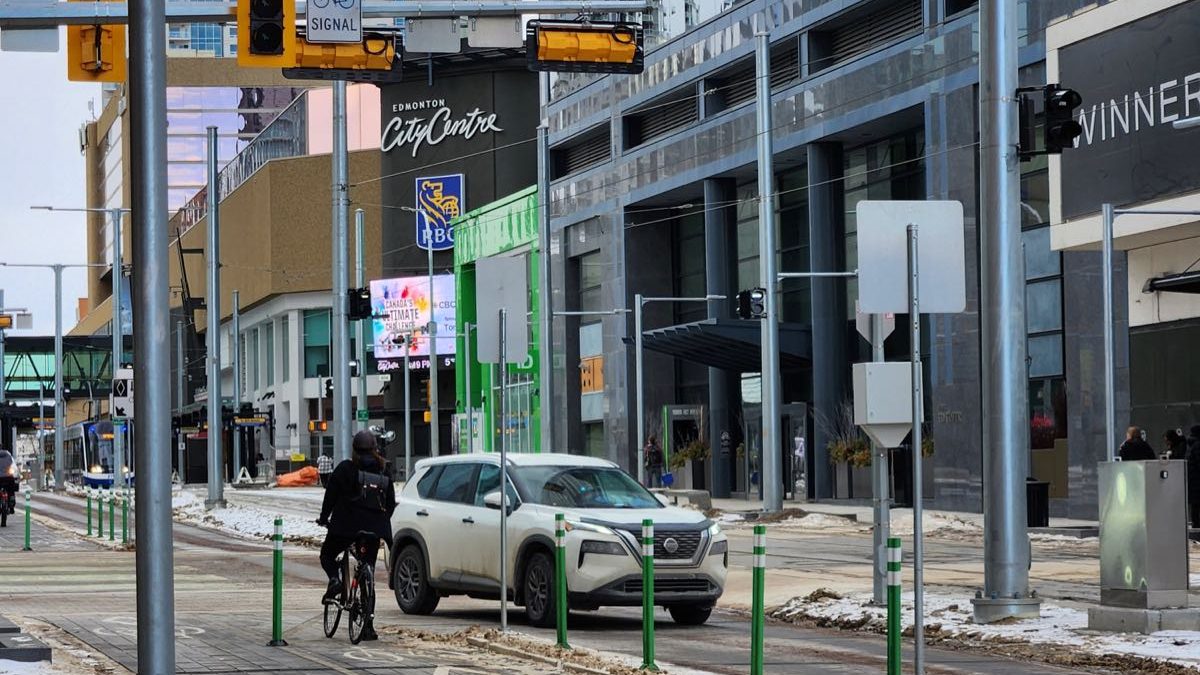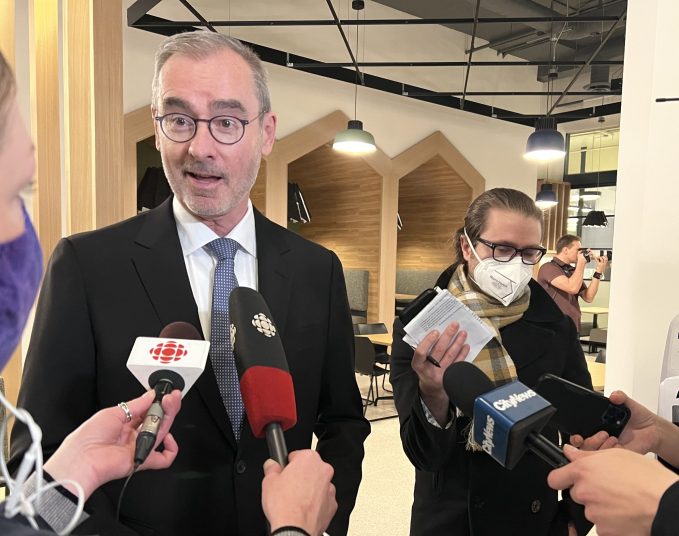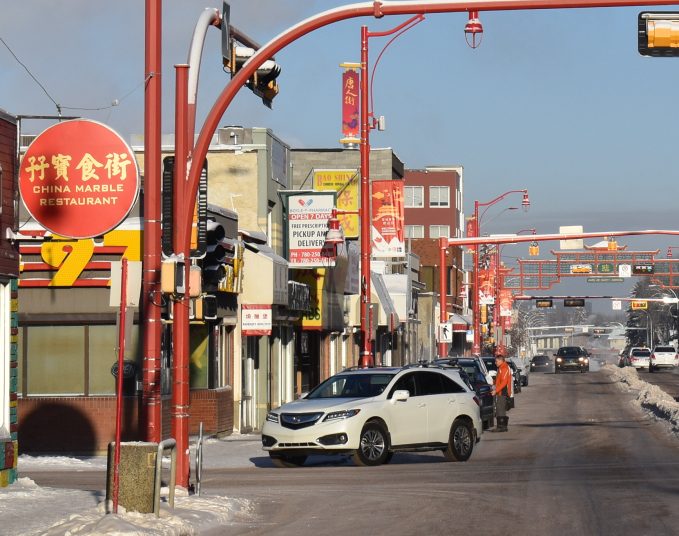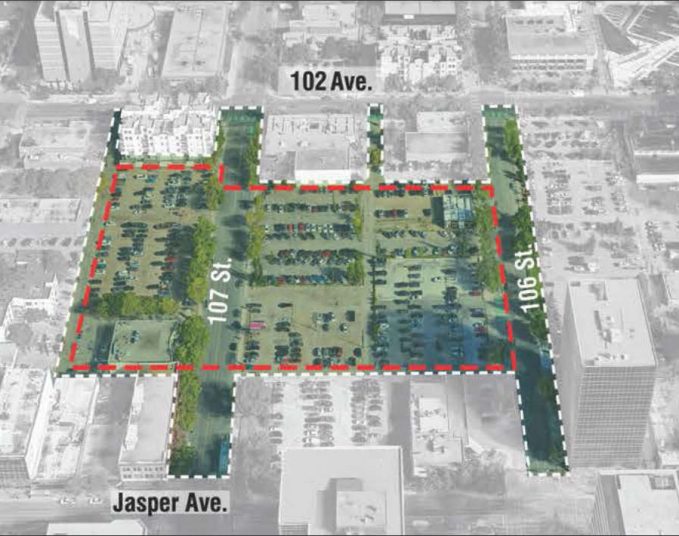A downtown road reopening to vehicle traffic has ignited a debate about the purpose of pedestrian streets in Edmonton.
The stretch of 102nd Avenue between 99th and 103rd Streets has been closed to cars since 2018 due to LRT construction, but a proposal to keep it car-free for a year-long pilot program was voted down last week.
Anand Pye, vice president of the Downtown Recovery Coalition and executive director of commercial real estate development association NAIOP Edmonton, says he wants to see pedestrian streets downtown, but 102nd Avenue is just not the place to make it happen.
“It needs to be built as a destination,” Pye says.
“There are still more things that could be done, that should be done, on that street, to make it a more pleasant experience. I thought that, if we were trying to do that without the LRT operational, and without the drive lane operational, we would have been starting from a standing start.”
The proposal was initially brought forward last June. While some residents spoke to council in favour of the pilot before last week’s vote, opponents included the Downtown Community League, the Downtown Business Association, the nearby YMCA and other property owners and managers on the street.
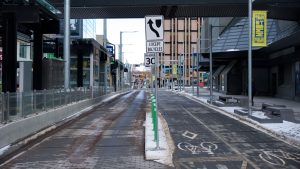
Council voted 8-4 against, with Anne Stevenson, Ashley Salvador, Aaron Paquette and Andrew Knack supporting the closure of 102nd Avenue to motor vehicles.
The City has toyed with pedestrian streets in the core but stopped short of making any of them permanent. In 2014, a proposal was put forward to close a portion of Whyte Avenue between midnight and 2:30 a.m. on busy nights. In the early days of the COVID-19 pandemic in 2020, the City closed traffic lanes and designated 28 kilometres of shared streets to help people socially distance outside.
Pye cites temporary closures of 104th Street, for Al Fresco and the former farmers’ market, as an example of how a pedestrian street can be done. He says there are certain criteria needed to make it work, like trees, lighting and streetfront businesses that bring a critical mass of people, and 102nd Avenue was lacking in those areas.
“There’s a reason why you feel nice on 104 Street or on 124 Street or Whyte Avenue, and why 102 Avenue is a less pleasant place to walk around on,” he says.
But Stevenson says the oft-used argument about “activation” ignores other benefits of removing vehicle traffic. She argues the corridor would be valuable as a safe conduit for active transportation, and even an escape from downtown noise.
“It is quiet in a way that nowhere else downtown is quiet. You don’t have the sound of traffic. And that can be a really lovely thing,” Stevenson says.
Other areas brought up for possible pedestrian-only streets include Macdonald Drive, 104th Street, 107th Street and Rice Howard Way. Stevenson is hesitant about closing busier streets to vehicle traffic, however, in part because they provide curbside parking that makes it easier to access some businesses.
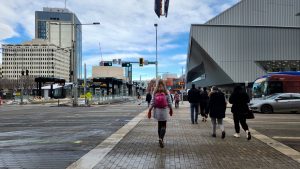
“The reason I felt that removing vehicle traffic from 102 Avenue made a lot of sense is because it’s not a very functional road for cars. There’s no drop-off points, there’s no parking available, it doesn’t provide direct access to any businesses,” she says.
Stevenson had hoped to see the pedestrian street in action after the LRT opened. But, due to ongoing delays that never came to fruition, the Valley Line LRT still has no confirmed launch date.
A rendered vision for the car-free corridor flipped the road and the bike lane, and had the sidewalk spilling over into where the current bike lane sits. Stevenson suggests pop-up coffee kiosks and food trucks would also be a possibility once the LRT was up and running.
“We didn’t really get the chance to have that experiment,” she says.
“I think we’re underestimating the number of people that would be moving through the space when the LRT does start running.”
Council has asked for a report back from administration six months after LRT begins operation, to get a sense of how the corridor is functioning and revisit the car-free idea.
Another report coming to council in November will look at other vehicle closure options in an overall downtown pedestrianization strategy.
Pye suggests 102nd Avenue between Churchill Square and the downtown library as one possibility for a car-free zone, but says the City should always start with temporary closures to test the waters – for example, closing to vehicle traffic for a week during the Street Performers Festival.
Meanwhile, the City is looking at putting pedestrian, car and bike counters on the 102nd Avenue corridor to analyze how it’s used.
“We’ll be able to see whether it functions well as a multi-modal street,” Pye says. “It’s got very large sidewalks, it’s got a bike lane, it’s got a one-way street and it’s got an LRT. No other street in Edmonton has (all) those things.”
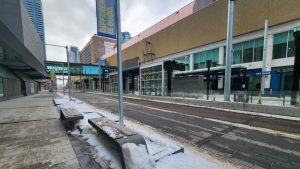
Savvy AF. Blunt AF. Edmonton AF.

